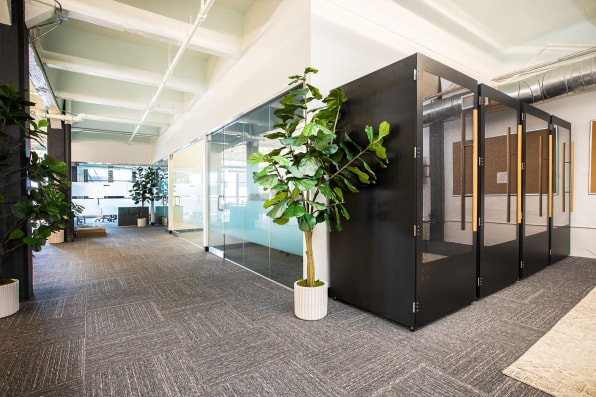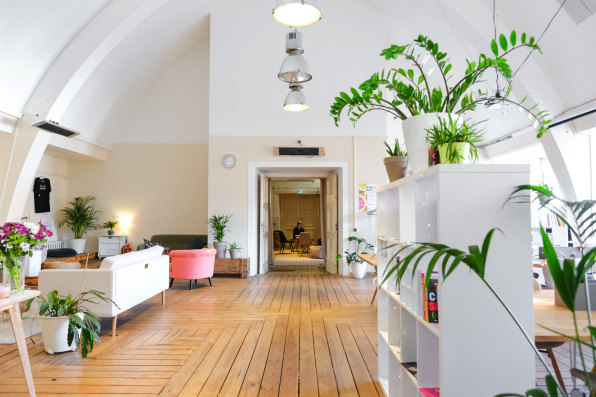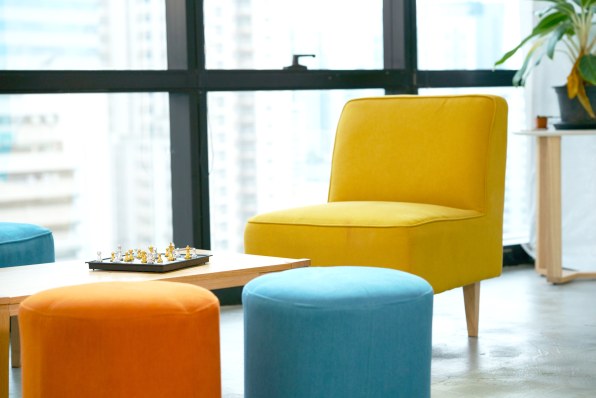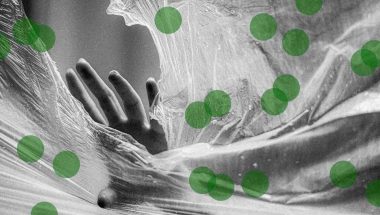- | 12:00 pm
5 ways office design can make you happier at work
Brain science and design come together to create better, more productive offices.

Designer Dan Sullivan wants to change your brain. As VP of R&D at Kova, a maker of building materials, facades, and windows, he’s been exploring the practical implications of what’s being called neuroaesthetics, or the ways that physical design can lead to measurable changes in the brain’s chemistry.
A growing body of evidence suggests that designing spaces in specific ways—lights with precise color temperatures on the Kelvin scale, rooms with particular layouts—can trigger the brain’s release of dopamine, a chemical associated with pleasure, and help people be more focused, productive, and happy.
Sullivan, the former head of design for Google Architecture’s R&D Lab, says neuroaesthetics is a design approach that can vastly improve the human experience of our built environment. And the place it’s probably needed most is the office.
“In the worst historical context, the workplace has been filled with poorly designed places full of distractions,” he says. It’s no wonder, Sullivan argues, that many people feel more effective and comfortable when they work from home. And during the pandemic, when many white-collar workers realized their jobs could be done just as well from home as from the office, the case for going into a badly designed workplace got even weaker.
But the office can still be a powerful space for work and collaboration. “If we want the workplace to become important again, it has to be a place that’s attractive to employees,” Sullivan says. “It has to make their work easier and make them happier humans.”
Here, Sullivan offers five science-backed ideas for making workplaces less distracting, more productive, and more enjoyable.

UPDATE OFFICE LAYOUTS TO REDUCE DISTRACTIONS
Too many offices fail to provide the kinds of spaces where different kinds of tasks can be done effectively. “We put a bunch of people in open office spaces and we expect them to be able to have creative insights and focus on their work. Meanwhile they’re able to overhear the meeting happening behind them and there’s a conversation happening two desks down,” Sullivan says.
Offices should be designed with better separation between focused work areas where people can get into flow states and places where people can collaborate or have impromptu meetings. “Making sure those functions are separated in a floor plan is really important,” Sullivan notes.
To that end, Kova has developed a reconfigurable partition system that can be used to break up spaces within open-plan offices, either temporarily or permanently, and moveable walls and furniture are being used to more affordably adapt spaces from high schools to corporate headquarters. The investment required to make floor plan changes can be high, which partly explains the advent of one of the most notorious office design products: the cubicle.

CREATE PHYSICAL TRANSITIONS BETWEEN SPACES
When different parts of an office are used for different purposes, interior design can subtly show people what’s appropriate where. Sullivan says designers can use physical structures and forms to help people understand how the office changes from place to place, such as a hallway from an open area that gradually funnels down to more private meeting space or quiet areas. Just walking through differently shaped spaces triggers brain activity, particularly curved spaces, and can boost energy and cognition.

CONNECT WITH NATURE, WITHOUT THE VIEW
“One great thing for restoration is a connection to nature,” Sullivan says. “I think people often associate this with a view outside, but views outside can actually be really distracting.” Research shows that the mentally restorative power of nature has a lot to do with the shades and shapes of green leaves and the visual complexity exhibited by plants and trees.
“You can bring those things inside to have that restorative effect,” Sullivan says. Plentiful office plants can provide the benefits of nature without the distractions of whatever’s happening outside the window. Such biophilic design has been shown to affect people’s moods and health, and simple potted plants can even cut down on annoying office noise. There’s also evidence that just seeing a plant can lower stress levels.

SOFTEN THE EDGES
That goes for everything from the shapes of rooms to the types of furniture in those rooms to the decorative patterns on floors and walls. “Sharp-edge patterns can trigger [the stress hormone] cortisol, and the brain is known to see those as threatening,” Sullivan explains. And when it comes to our aesthetic preferences, it’s been found that people really just love curvy architecture more than hard edges and right angles.

SOFTEN THE ART
Art can often be found on the walls of offices, either for decoration or a sense of sophistication. Sullivan says offices should be careful about what kind of art they put on their walls. Overly jarring or detailed images can be triggering to people, or even a source of distraction. “Some people get lost in the story of the art piece,” Sullivan says. “For people who have different levels of neurodiversity conditions, like autism or ADHD, paintings can actually be super disruptive to finding flow.”
Being thoughtful about the impact of design decisions can help companies make their offices more productive spaces, but there’s no one method or pattern language to follow. Companies considering applying these ideas, or working with designers to create specific neuroaesthetic approaches for their needs, should be willing to test and revise.
“This area of research, or at least the implementation in the built environment, is sort of in its infancy,” Sullivan says. “A benefit to almost anybody is to think of their floor plans as experiments, and to provide themselves enough flexibility to be able to evolve those experiments until they get the results that they’re actually desiring.”






































